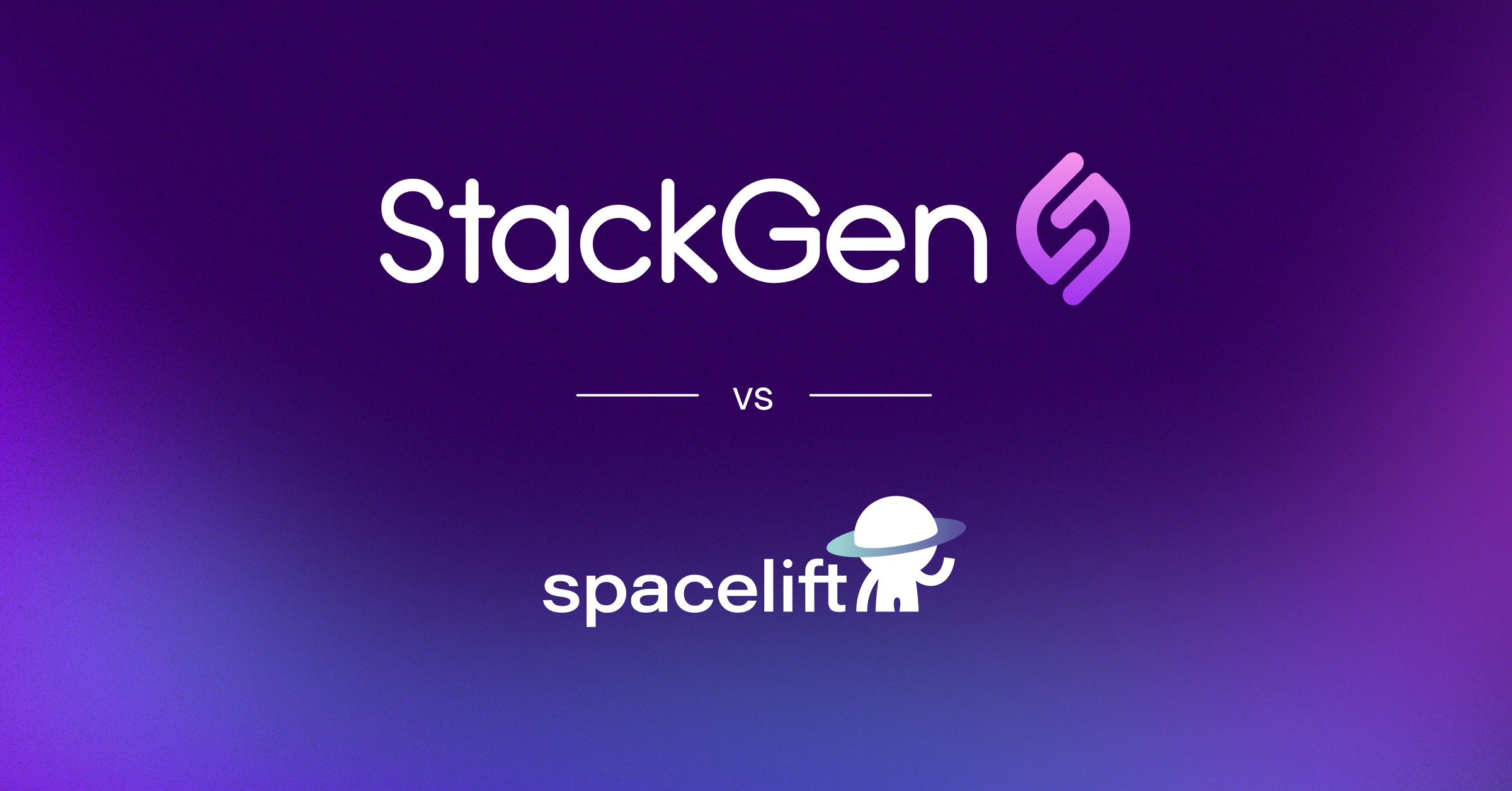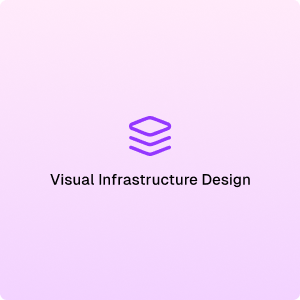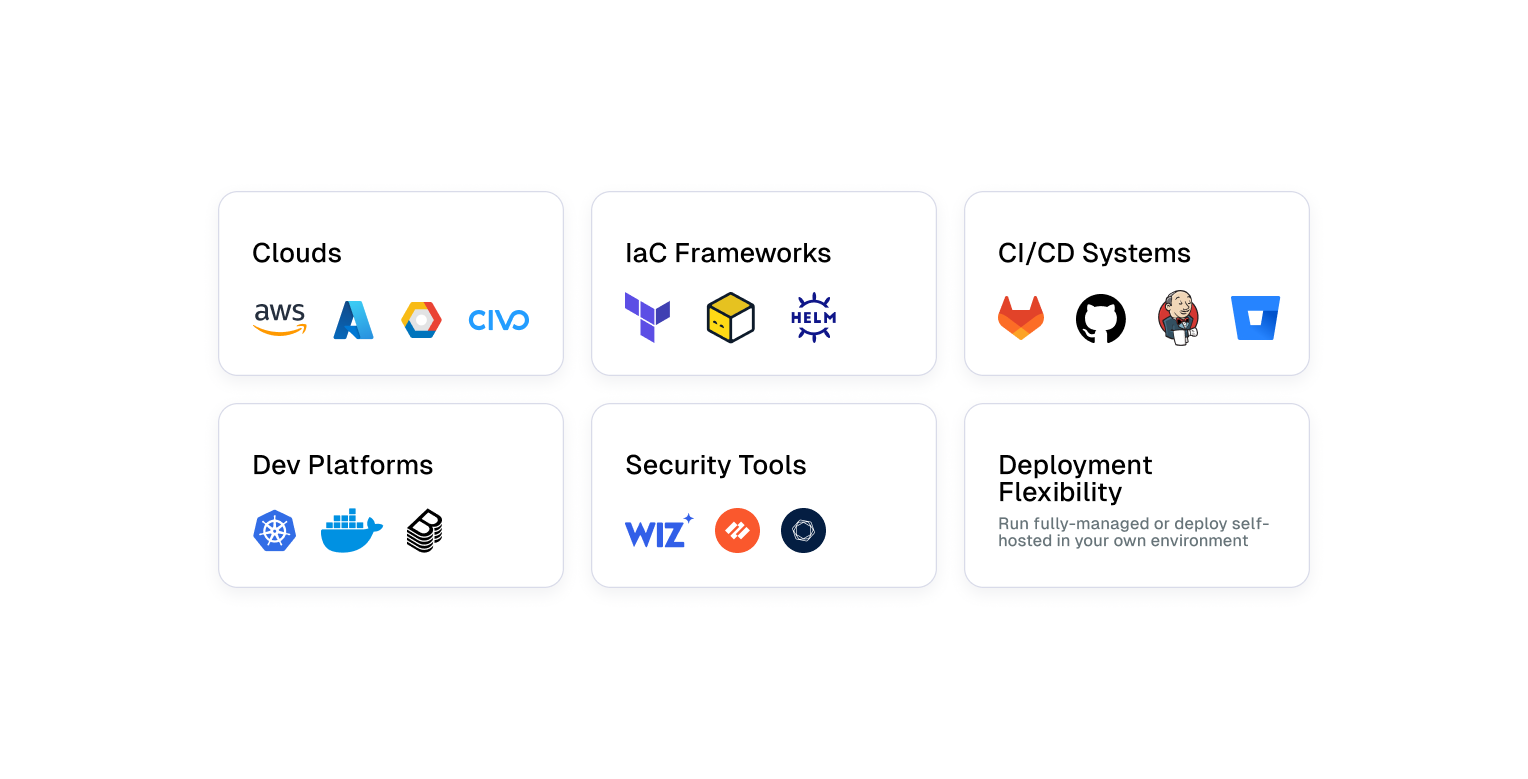|
Visual Infrastructure Design
|
Topology Canvas (Infracomposer) with drag-and-drop modeling and Terraform generation
|
No visual design capabilities
|
|
Infrastructure Generation
|
Generates Terraform from app code (Java, Python, C#), diagrams, cloud state, or prompts
|
No infrastructure generation; operates on authored IaC
|
|
Module Management
|
GenAI-powered editor, version control, VS Code plugin, registry publishing
|
Hosts private Terraform registry; modules authored and managed externally
|
|
Compliance Dashboard
|
Centralized dashboard across appStacks with support for Mars-e, NIST, CIS, etc.
|
No unified compliance dashboard or multi-framework compliance view
|
|
Cloud-to-Code Support
|
Converts live AWS, Azure, GCP infra into Terraform for reuse or re-architecture
|
Not supported
|
|
AI-Powered Insights
|
Intelligent recommendations for policy, drift, and optimization
|
Limited AI-powered features
|
|
Workflow & Automation
|
Visual workflow designer, Git-based CI/CD automation driven by pull request (PR) automated workflows
|
PR-driven workflow automation
|
|
Policy Enforcement
|
StackGuard enforces policies at generation time; supports natural language and compliance packs
|
OPA/Rego-based policy checks during CI/CD runs
|
|
Platform Flexibility
|
No vendor lock-in, self-hosting available
|
Requires IaC expertise, self-hosted & private workers
|
|
Infrastructure Management
|
Complete cloud resource visibility, intelligent drift management
|
Resource visibility & tracking, automated drift detection
|
|
Incident Remediation
|
StackHealer + StackAnchor for auto drift and incident remediation with autonomy level config to include human-in-the-loop
|
Scheduled drift detection with optional auto-reconciliation runs that respect your policy and approval workflow
|
|
Cloud Migration
|
Cloud-to-cloud and brownfield-to-IaC migration via StackBuilder and StackFinder
|
No automated migration capabilities
|
|
Backstage Integration
|
Native plugin: transforms service metadata into appStacks and infrastructure via metadata-to-IaC
|
Plugin for viewing and triggering stack runs; no provisioning or compliance workflows
|
|
Security Integrations
|
Integrates with Wiz, Palo Alto, and Tenable for security scanning & posture enforcement
|
No native integrations
|
|
Pricing Model
|
Free to use for individual developers. Enterprise Edition for SaaS model
|
Tiered pricing based on users, features, and number of workers; advanced features gated behind enterprise tiers
|








.png)
.png)



-1.png)

